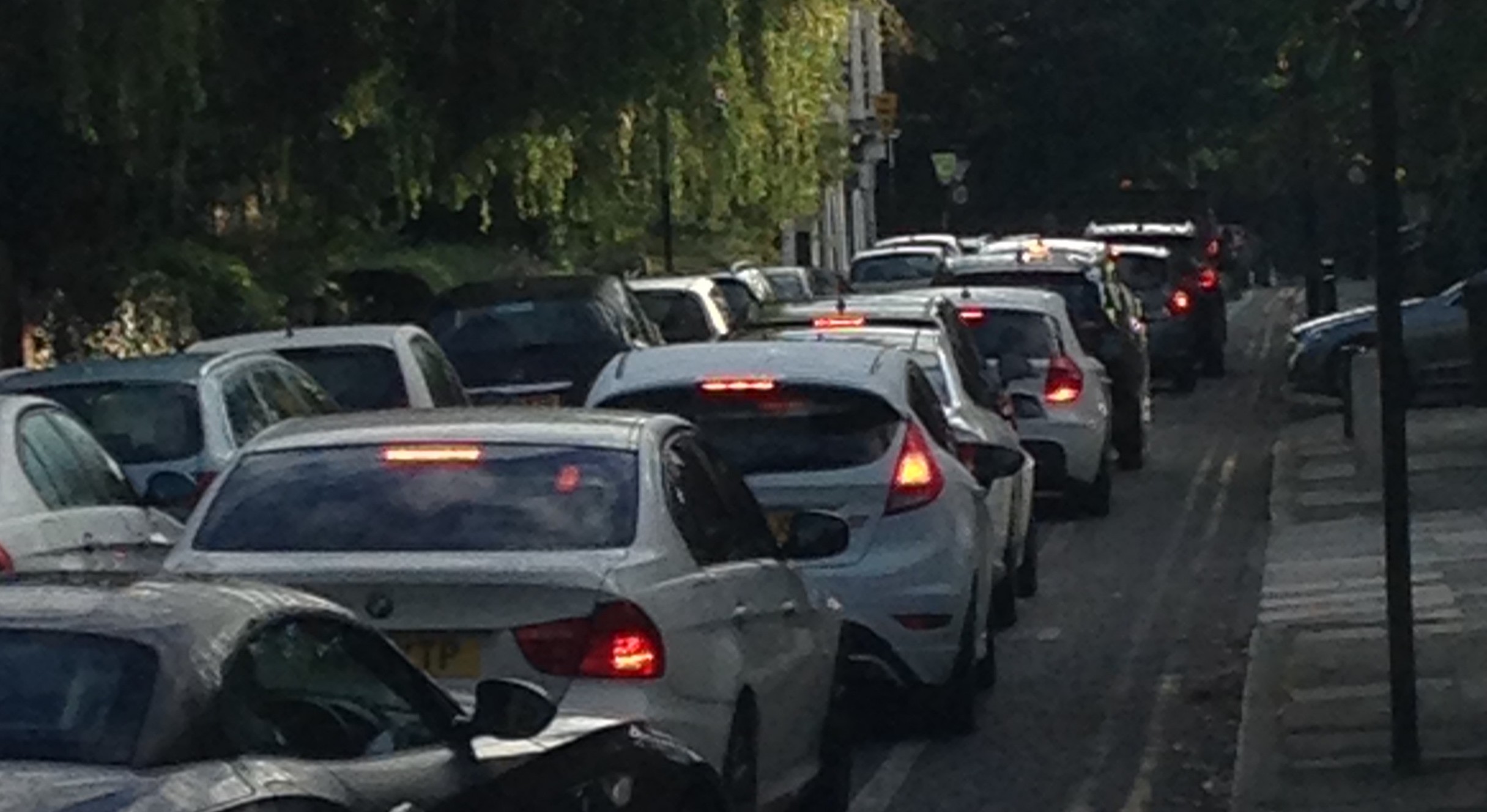
Queuing traffic on Elmfield Road (picture taken pre-Covid)
The website CityMonitor recently published an article “How Google Maps is ruining your neighbourhood“. The article explains that, since they were introduced in 2009, Sat Nav apps have caused an increase of traffic on minor roads.
While the sales pitch of Sat Nav apps is that they enable drivers to avoid congestion, the actual outcome is that minor roads can now be just as congested as main roads.
In effect traffic has been displaced from main roads onto minor roads.

How might Sat Navs be affecting traffic in Gosforth?
Clearly there are quite a few minor roads in Gosforth that are busy with traffic, including Elmfield Road pictured above.
We’ve had a look at what routes Google Maps recommends for driving through Gosforth. As the CityMonitor article says, many of these routes use minor roads that are not designed for high volumes of traffic.
Not all roads are affected. Some, like Bath Terrace in the picture below, have traffic “filters” that prevent vehicle traffic using them as through routes.
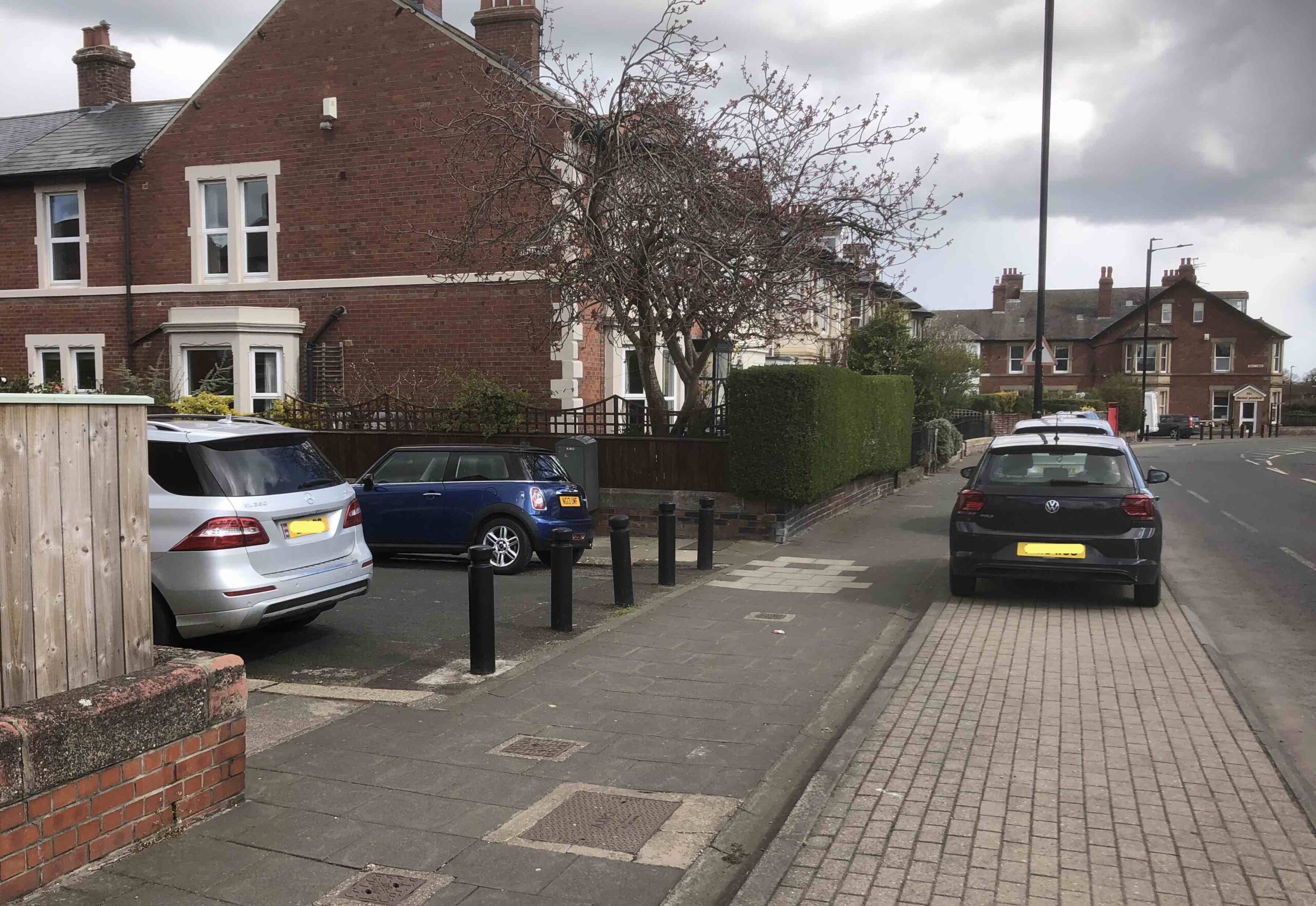
Bath Terrace, Gosforth
Newcastle’s Main Road Network
Newcastle has a main road network, defined as part of its Local Plan. The map below shows the main roads for driving in the Gosforth area.
These are the roads that are intended for, and designed to cope with, large volumes of traffic.
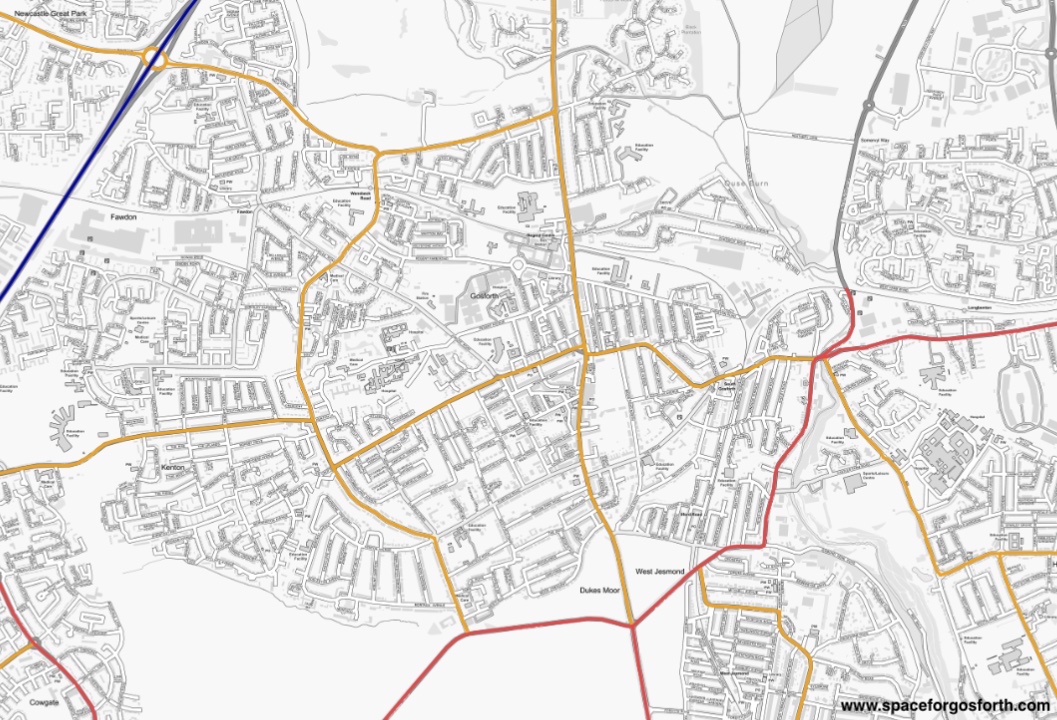
Newcastle main road map. Primary distributor roads are marked in red, secondary distributor roads in orange.
There are three types of main road in Newcastle’s plan.
- Strategic Roads (in blue) are nationally significant roads used for the distribution of goods and services, and a network for the travelling public. The nearest strategic roads to Gosforth are the A1(M) Western Bypass and the A19.
- Primary Distributor Roads (in red) are the preferred roads for motorised vehicles and generally connect to strategic roads. The primary distributor roads in Gosforth are Grandstand Road, part of Jesmond Dene Road, Matthew Bank, Haddricks Mill Road and Killingworth Road.
- Secondary Distributor Roads (in orange) generally connect strategic and primary roads to smaller areas and [in theory] carry significantly lower volumes of traffic than either of those categories, and fewer HGV’s. Gosforth High Street is a secondary distributor road, as are Salters Road, Church Road, Station Road, Broadway West, Wansbeck Road, Kenton Road, and Great North Road north of Gosforth High Street.
Other roads, shown in white, are considered to be minor roads for access to people’s homes and local destinations.
Displaced Traffic
We found nine example part-routes where Google Maps has recommended using minor roads that are not part of the main road network.
In some cases the minor roads were quicker, but not always. Where minor roads are quicker, this is likely to be temporary as Sat Navs direct more traffic to the route undoing any benefit.
Noticeably, both historic and new Low Traffic Neighbourhoods like Brunton Park, Melton Park, Gosforth Terraces and Garden Village do not have any routes through them because they have been designed to prevent through traffic.
It is also noticeable that in many cases it would be just as quick, if not quicker, to cycle rather than drive.
In each case we have highlighted which minor streets are being used.
Route 1: via Elmfield Road and The Grove.
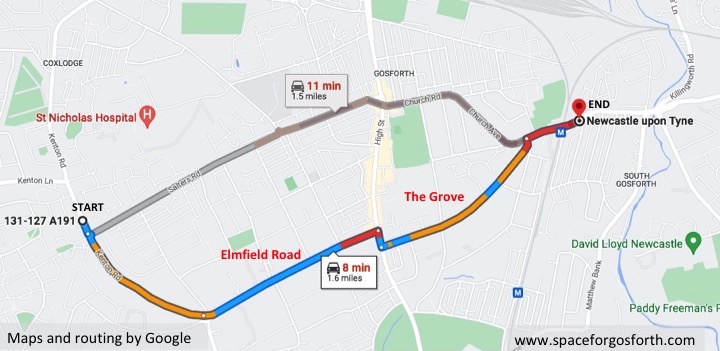
Route 2: via Lindon Road, Hawthorn Road and The Grove.
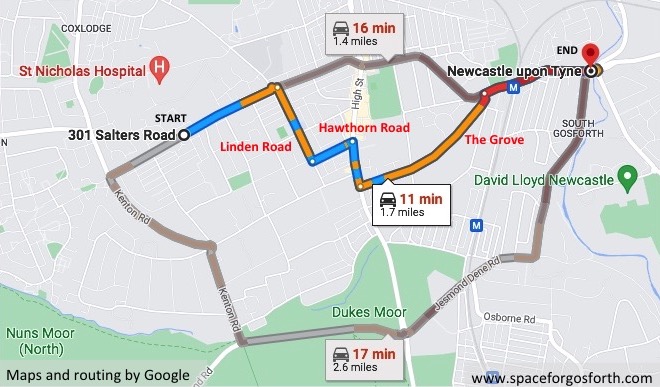
Route 3: Via Regent Farm Road.
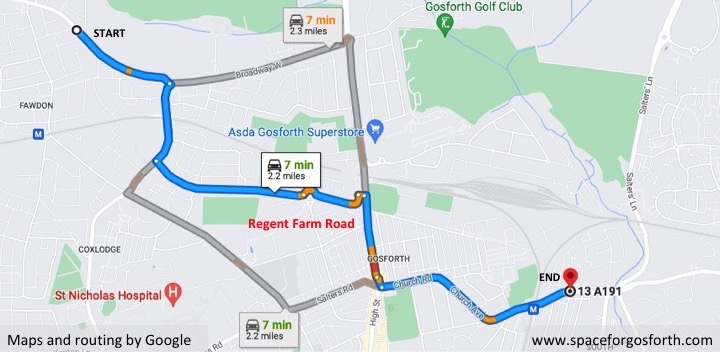
Route 4: via Church Road, Hyde Terrace and Christon Road.
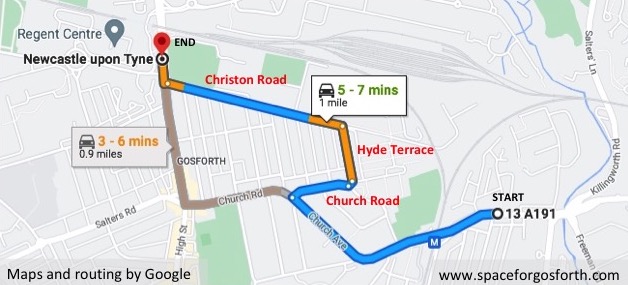
Route 5: via Linden Road and Elmfield Road.
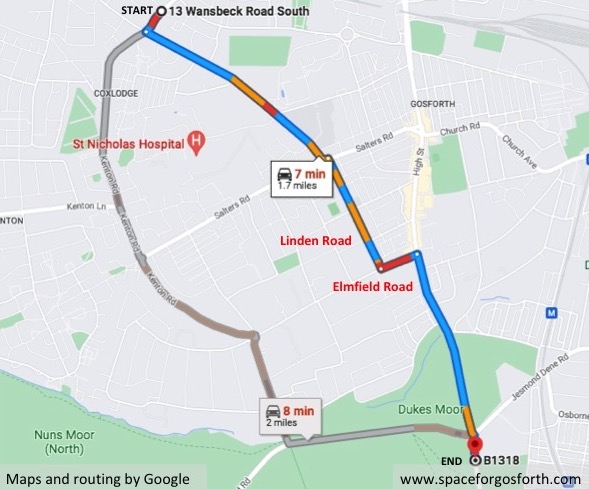
Route 6: via Moorfield, Moor Road South, Hawthorn Road and Linden Road.
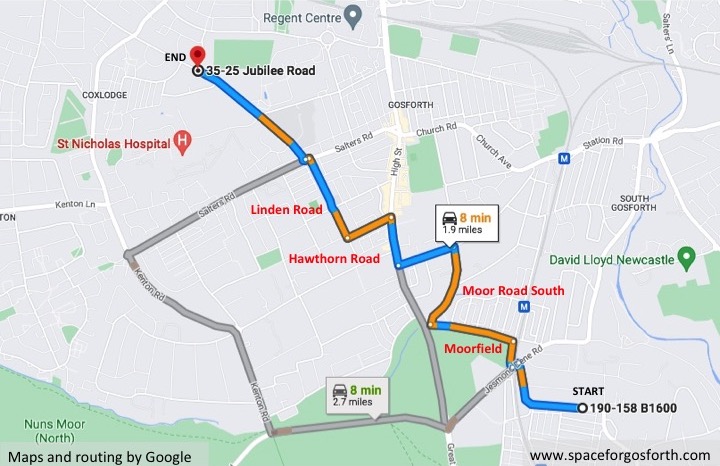
Route 7: via Moorfield, Moor Road South and Moor Road North.

Route 8: Via Regent Road North and Regent Road.
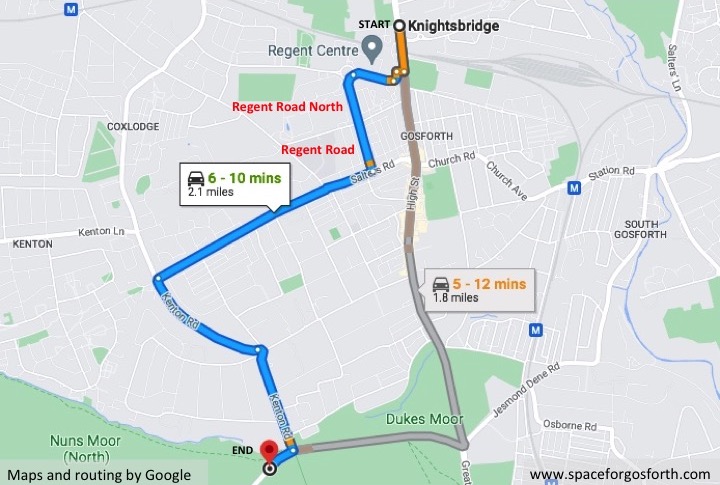
Route 9: Via North Avenue, Elmfield Road, Westfield Drive and Fernville Road.
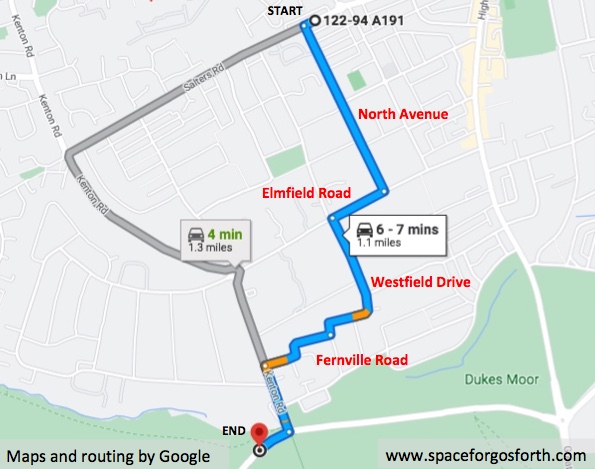
What can be done?
It is worth saying that it is completely legal currently for people to drive on these minor roads to avoid main road traffic. The effect of this though, is more noise, exhaust fumes, and more danger for people who live on these roads or using them to walk or cycle.
Higher levels of traffic at peak times of day, just when children will be travelling to or from school, act as a barrier to prevent families walking or cycling the school-run. DfT estimate one in four cars on the road at peak times are on the school run. For more families to commit to walking or cycling, traffic levels have to be consistently low at the times they want to travel, not just on a quiet Sunday morning.
From an engineering perspective, it is quite simple to stop traffic being displaced from main roads onto minor roads. All it needs is a few bollards and/or some planters to prevent through traffic, just like on Bath Terrace (see previous picture).
We know, not least from experience on Salters Bridge, Stoneyhurst Road and Castle Farm Road, that stopping through traffic on minor roads has practically no impact on adjacent main roads but it does improve quality of life for residents, reduce road traffic collisions, and enables more people to walk and cycle.
It is also a necessary pre-cursor to any traffic calming to make main roads safer.
If you think we have missed any routes please do let us know via the comments, and please do let your local Councillors know if you are concerned about traffic on minor roads.
If you want to read more, this is the City Monitor article.
Have you noticed your neighbourhood streets getting busier…?https://t.co/L16S6mr2Af
— City Monitor (@CityMonitorAI) July 12, 2022


Bollards on the high street reducing traffic flow – very little parking off the high street-until the council comes up with a radical plan for the high street it will only get worse – lots of empty shops and failing business due to the incompetence of the council
SPACE for Gosforth has already covered the impact of the bollards in a separate blog: https://www.spaceforgosforth.com/we-still-love-gosforth-high-street/
To answer your points though:
– The main constraint to traffic flow of Gosforth High Street is other traffic, not bollards. Specifically traffic travelling east/west at the Salters Road junction which is substantially unchanged.
– The High Street has three separate car parks. If these are full that may suggest they are under-priced. Certainly it is cheaper to park for a few hours than get the bus.
– Most recent shop closures reflect national trends, for example closure of local bank branches. This is nothing to do with the Council.
– We agree with the need for a radical plan. Big changes are needed to ensure Gosforth High Street is safe for all users, has clean air and is a great environment for people shopping.